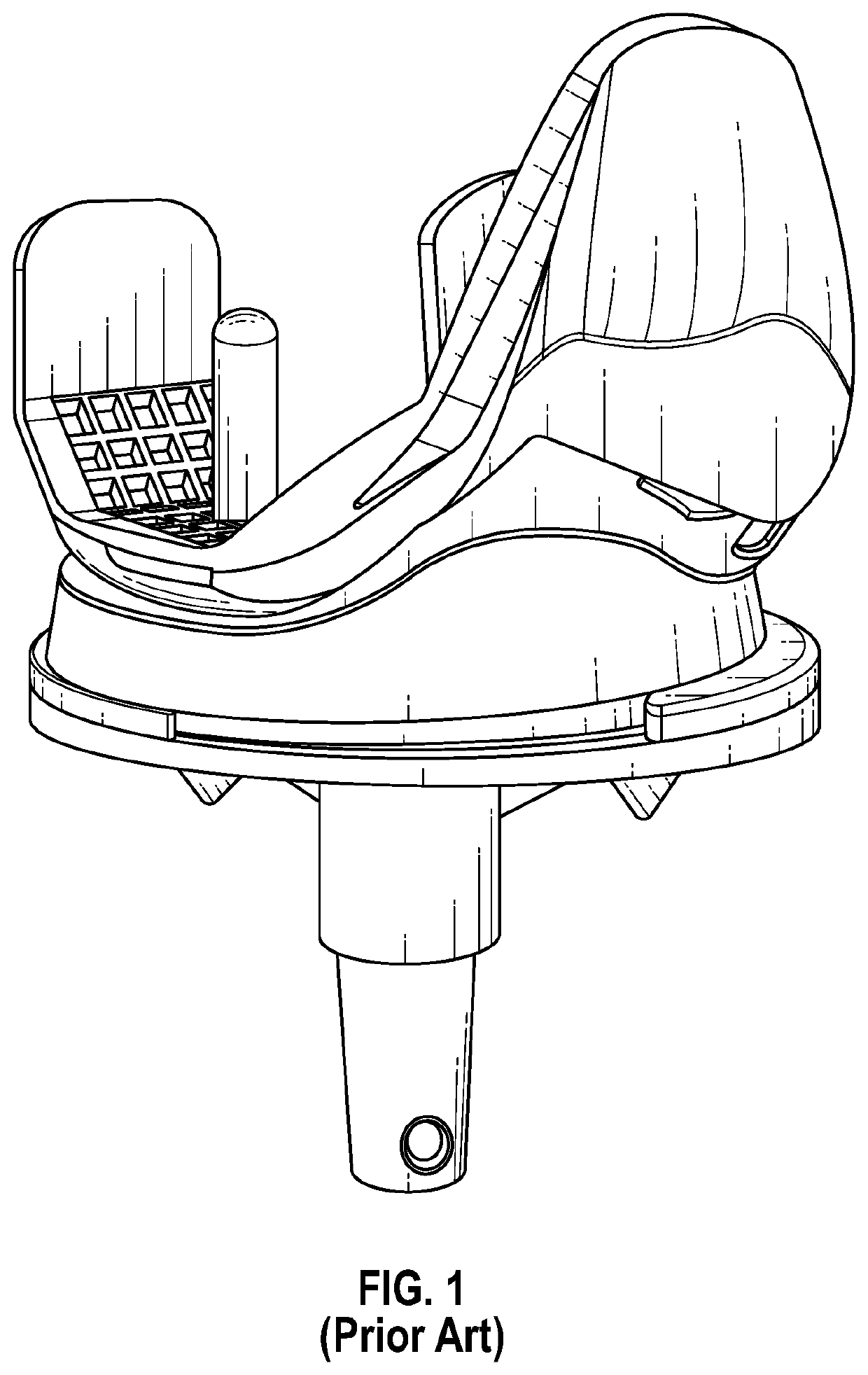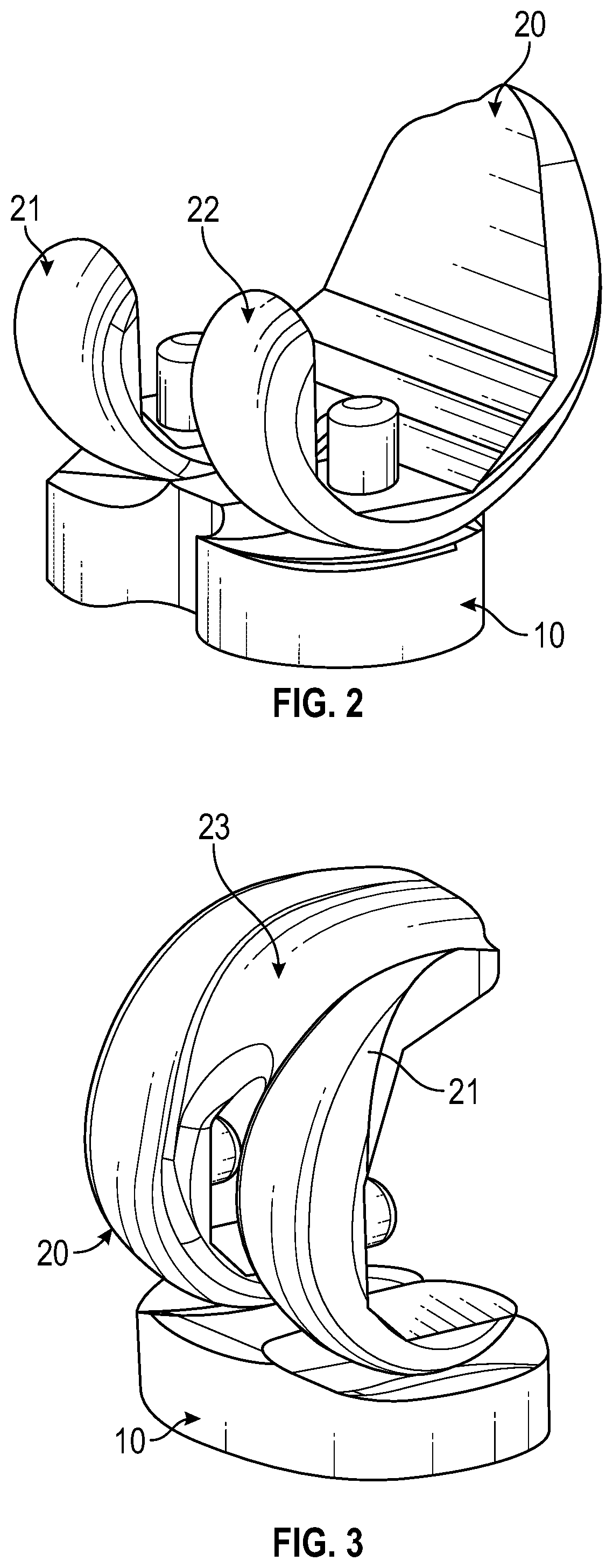Condylar asymmetry knee prosthesis
a technology of condylar asymmetry and knee joint, applied in the field of knee prosthesis, can solve the problems of reducing affecting the quality of life of patients, and the interaction between the distal end of the femur and the proximal end of the tibia during flexion and extension, and achieve the effect of facilitating axial rotation
- Summary
- Abstract
- Description
- Claims
- Application Information
AI Technical Summary
Benefits of technology
Problems solved by technology
Method used
Image
Examples
Embodiment Construction
[0017]The present invention differs from previous designs in that it mimics natural knee movement by being able to simultaneously rotate and translate after passing 90° flex. The curvature on the lateral side makes the femoral component rotate after 90° flex and the curvature on the medial side blocks the tibial curvature to rotate out of range. The different radii of the femoral component in coronal plane accommodate rotation as the knee bends beyond 90° flexion and the medial collateral ligament (MCL) and the anterior cruciate ligament (ACL) are loose. Due to these features and different radii in the femoral component, the degree of rotation as the knee implant flexes is increased compared to prior designs.
[0018]Another feature on the medial side of the tibial component constrains the femoral component while it rotates to make it stable. Specifically, the profiles at the lateral and medial sides, as well as the curvatures on the anterior and posterior sides of tibial component pro...
PUM
 Login to View More
Login to View More Abstract
Description
Claims
Application Information
 Login to View More
Login to View More - R&D
- Intellectual Property
- Life Sciences
- Materials
- Tech Scout
- Unparalleled Data Quality
- Higher Quality Content
- 60% Fewer Hallucinations
Browse by: Latest US Patents, China's latest patents, Technical Efficacy Thesaurus, Application Domain, Technology Topic, Popular Technical Reports.
© 2025 PatSnap. All rights reserved.Legal|Privacy policy|Modern Slavery Act Transparency Statement|Sitemap|About US| Contact US: help@patsnap.com



